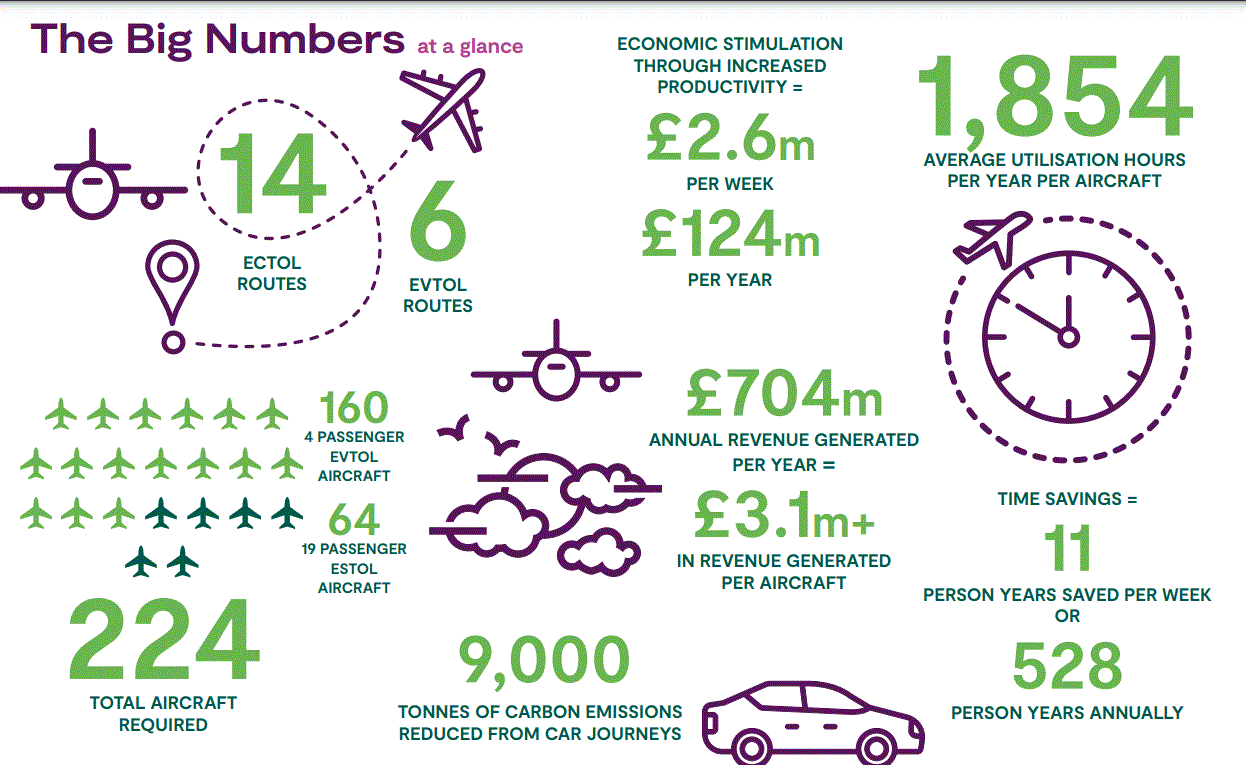
On 20 advanced air mobility (AAM) routes in the UK, operators would generate UKP704 million in annual revenue, including an economic stimulation of around UK124 million a year directly from the increased productivity the future aviation system brings, is a key conclusion from a new UK Research and Innovation (UKRI) report from EAMaven.
“In line with net zero ambitions, the Market Assessment study also considers measures for reducing the carbon and energy impact of travel. The results suggest around 9,000 tonnes of carbon emissions can be saved over the identified routes from passengers switching from road to AAM transport, based upon reduced travel time and congestion, as well as changes to energy use.”
Other key outcomes of the research include:
- AAM is indeed economically viable and would provide a significant contribution to the economy, whilst also reducing carbon emissions of travel.
- On many of the northern routes, there are viable numbers of travellers given the anticipated lower cost of AAM services, so the economic, environmental and societal benefits could be significant.
- AAM can and should play an important role in connecting the four nations through the provision of services not economically viable through building new road or rail infrastructure.
- Commercially viable routes are available that could be developed through private investment in the vehicles and infrastructure, with no need for investment from the public.”
The purpose of the study was to illustrate the potential for electric aviation in the UK using a mix of electric vertical take-off and landing (eVTOL) and electric conventional take-off and landing (eCTOL) aircraft. EAMaven developed a methodology to predict the potential demand between destination pairs, using a modified traditional airline prediction model. This is based on a blend of traditional data sources and new mobility data. Key data points:
- Route Assessment: 14 eCTOL routes and 6 eVTOL routes. The routes chosen were a mix of potential services that would address the Government’s ‘levelling up’ and ‘northern powerhouse’ agendas, as well as the Union Connectivity Review.
- Total Aircraft required: 224 in total, made up of 160 four-passenger eVTOL and 64 19-passenger eSTOL aircraft.
- Annual revenue generation: UK704 million per year, equating to just over UK3.1 million in revenue being generated per aircraft.
- Average aircraft utilisation: 1,854 hours per year. eVTOL are being flown on average 1,965 hour per year and eCTOL on average are being flown 1,581 hours per year.
- Economic stimulation: Through increased productivity, UK2.6 million per week was put back into the economy, or UK124 million annually, using Department for Transport (DfT) WebTAG benchmarks.
- Time Savings: 11 person years per week, or 528 person years on an annual basis.
- Carbon Emissions Savings: Based on attracting travellers away from car journeys, we calculated that, on an annual basis, we would reduce carbon emissions from cars by 9,000 tonnes
For information and to download report
Market assessment for advanced air mobility in the UK – UKRI

